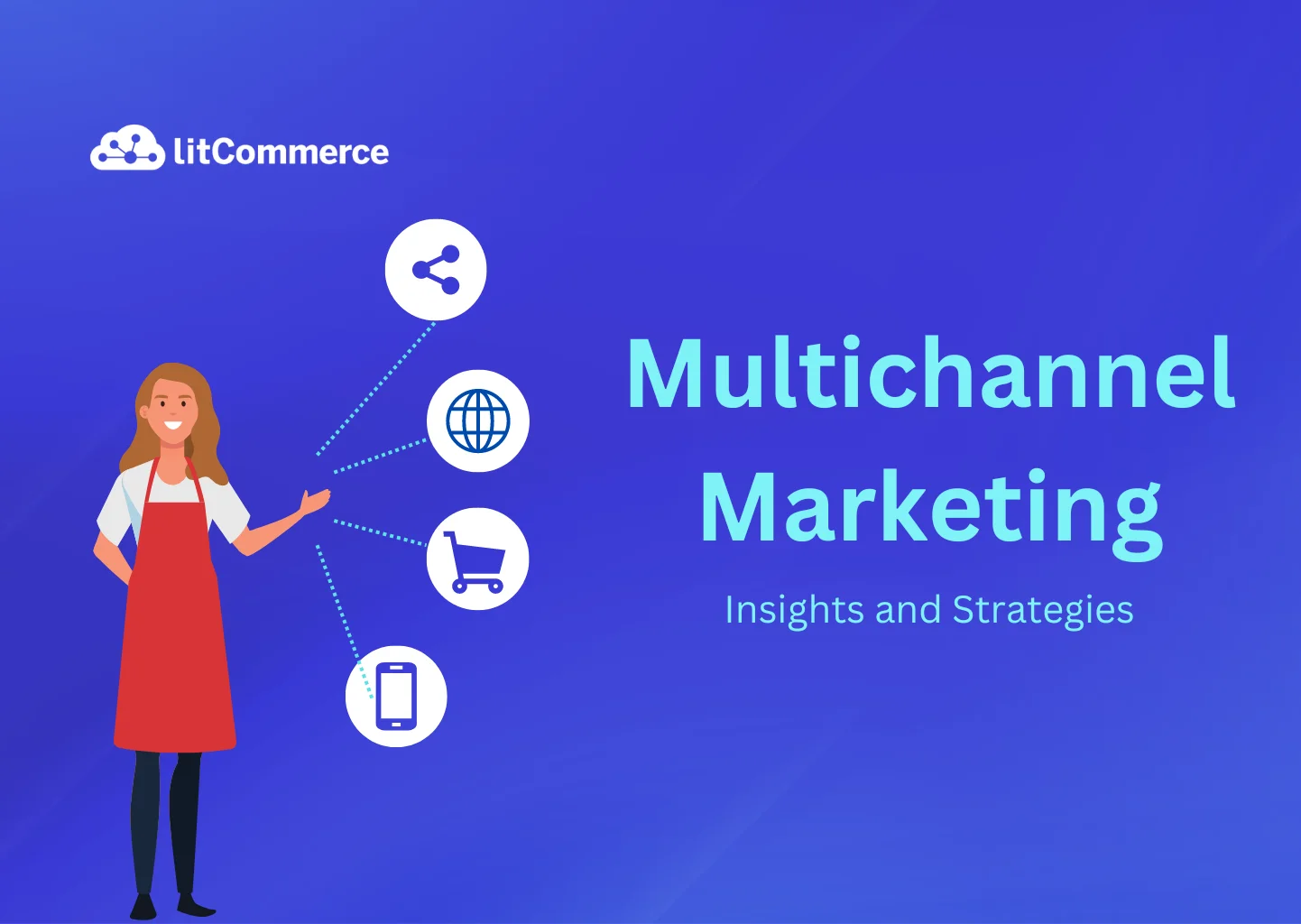Did you know that 72% of consumers prefer to connect with brands through multiple channels? This statistic makes it clear that having a robust multichannel marketing strategy isn’t just an option anymore—it’s essential. To truly reach and engage your audience, you need to be present where they are, offering consistent and valuable interactions across all touchpoints.
In this guide, we’ll break down everything you need to know about multichannel marketing, from the basics (like, what it even is!) to some pro-level strategies.
What is Multichannel Marketing?
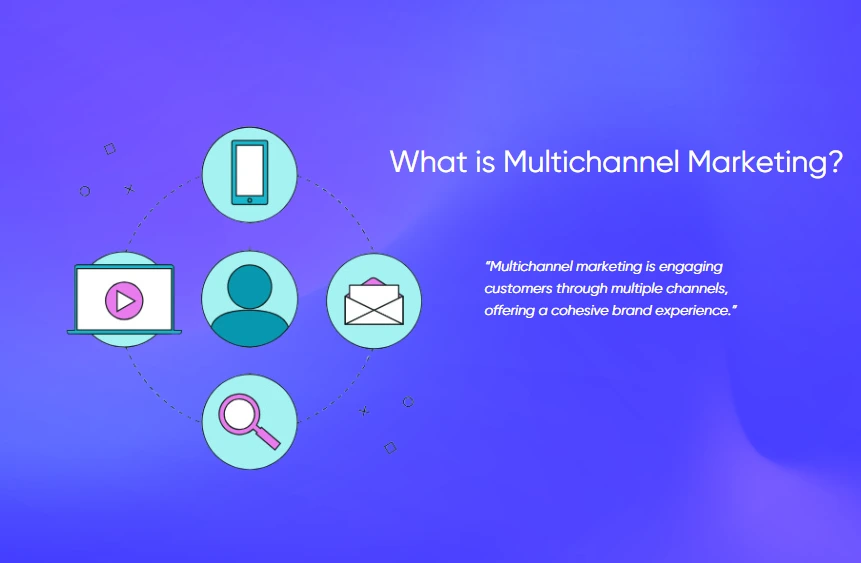
Multichannel marketing refers to a strategy that uses multiple platforms—such as social media, email, websites, and in-store promotions—to reach and engage customers. By offering a consistent experience across these channels, businesses can connect with a wider audience, enhance customer interactions, and increase sales opportunities.
To be clearer, various platforms that businesses should use for marketing are:
- Online channels: Websites, email marketing, social media, and search engines.
- Offline channels: Direct mail, in-store promotions, print advertising, and events.
- Mobile channels: SMS, mobile apps, and mobile-friendly websites.
- Traditional channels: TV, radio, and billboards.
The overall aim of multichannel marketing is to deliver a consistent and integrated brand experience ensuring that customers engage with the business through the channels of their choice. It enhances the likelihood of expanding the coverage, interacting with customers, and making sales.
Examples of Multichannel Marketing in Action
To help you visualize the multichannel marketing definition more clearly, we provide the following two prominent examples:
1. Sephora

Sephora, a leading beauty retailer, employs a multichannel approach to engage its wide-ranging customer demographic. Here’s how:
- Brick-and-mortar stores: Their physical stores are a beauty lover’s dream, with product testing and personalized consultations – perfect for those who want to touch and feel before they buy.
- eCommerce website: Their website’s like an online Sephora, packed with product details, tutorials, and exclusive deals for homebody shoppers.
- Mobile app: Sephora’s app is a must-have, with personalized recommendations, rewards programs, and easy store navigation for the on-the-go beauty enthusiast.
- Social media: They’re all over Instagram and TikTok, showcasing product demos, trends, and user-generated content, creating a real sense of community.
Basically, Sephora’s got you covered no matter how you like to shop for your beauty fix.
2. Salesforce
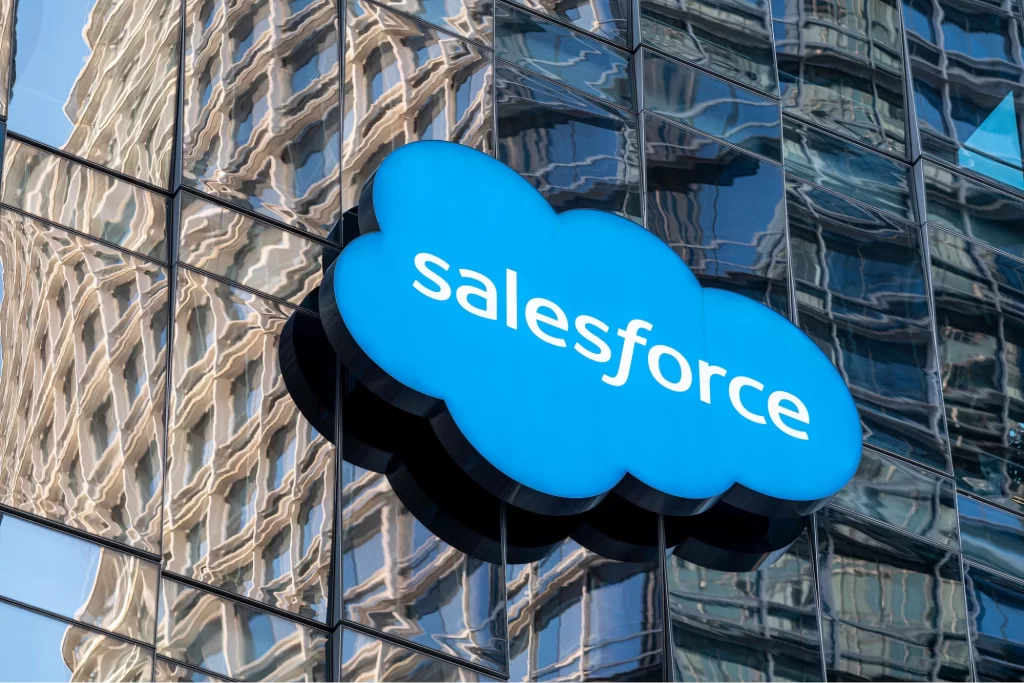
Salesforce, a big name in cloud-based software, has a different multichannel marketing strategy that’s tailored to businesses. Check it out:
- Website & online demos: Their website’s a goldmine of info about their products and services, with interactive demos that make complex stuff easy to understand.
- Content marketing: They use blogs, white papers, and webinars to position themselves as industry experts, addressing specific pain points that businesses face.
- Social media: They’re active on LinkedIn, connecting directly with potential clients and building relationships within their industry.
- Events & conferences: Salesforce shows up at trade shows and conferences, giving in-person demos and consultations, which is key for building trust in the B2B world.
Salesforce’s multichannel approach is all about establishing credibility and offering solutions that businesses actually need.
Benefits of Multichannel Marketing
So, why multichannel marketing matters? Let’s dive into its key benefits!
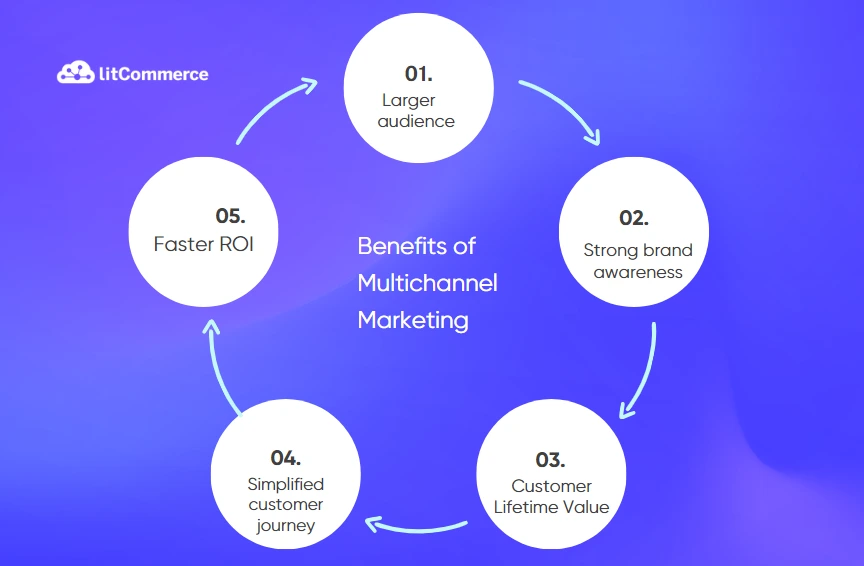
Reach a larger audience
In a way, by getting on multiple channels, you can reach out to customers who are already engaged more. According to a survey conducted by Omnisend, campaigns that employed three or more channels had a 287% higher purchase conversion rate than single-channel campaigns.
Also, customers interacting with your brand through multiple platforms are more likely to share your brand with friends and relatives, expanding your reach.
Build strong brand awareness
It is vital to be very consistent while creating the brand across different touch points. In this way, you ensure that the consumers see the same brand in each channel. Consistent exposure across multiple mediums also reinforces brand knowledge and, ultimately, brand salience.
McKinsey & Company’s report shows that integrating a consistent brand across all the touchpoints can increase revenue by as much as 23 percent. This makes multichannel marketing a powerful strategy for reinforcing your brand message.
Improved Customer Lifetime Value (CLTV)
Interacting with clients at various levels increases their satisfaction while interacting with your brand, improving the CLTV. According to the studies, customers who engage in multiple channels have a 30% higher lifetime value than those who use one channel only.
Moreover, companies with multichannel solid customer engagement experience a 9.5% year-over-year increase in annual revenue. This demonstrates how effective multichannel marketing can foster long-term customer relationships and drive business growth.
Simplified customer journey
Multichannel marketing makes interacting with customers more fluid by linking them together. It unifies the brand identity, influencing the customer and making it easier for them to switch from learning about the brand to purchasing from it.
By extending choices of how customers wish to engage, such as through social media platforms, email, or physically through stores, businesses create a communication channel that the particular customer is comfortable with.
It also fastens the buying process, minimizes cart abandonment rates, and customizes based on data from varied channels.
Faster ROI
Multichannel marketing enables businesses to connect with consumers on their preferred platforms, enhancing engagement. According to studies, B2C campaigns that utilize multiple channels see a 24% greater ROI than those that rely on a single channel. This grew engagement leads to higher conversion rates as customers are more likely to interact with brands that reach them through various touchpoints.
Multichannel Marketing Challenges
Multichannel marketing’s awesome, but it’s not without its hurdles, such as:
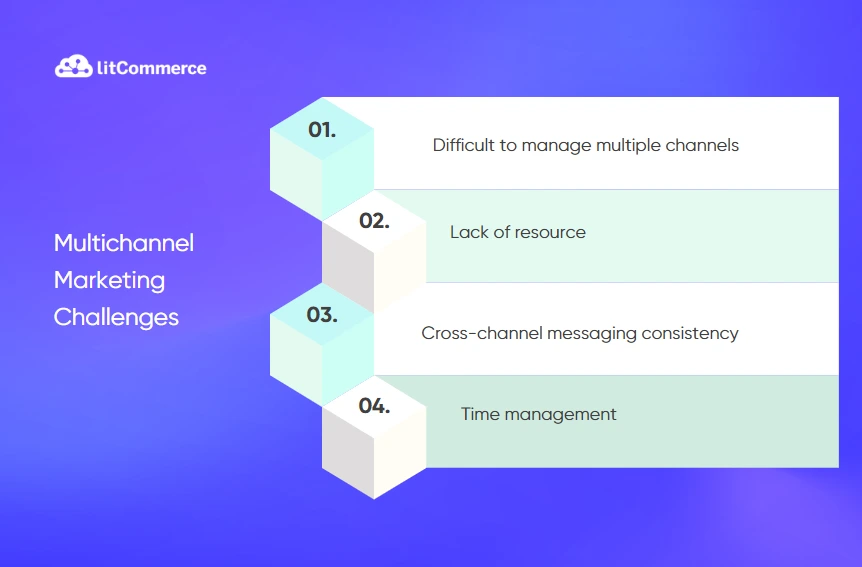
Difficult to manage multiple channels
One of the most significant challenges in multichannel marketing is managing multiple channels effectively. According to recent studies, 48% of marketers cite creating a cohesive multichannel strategy as the most challenging aspect. The difficulty lies in tailoring messages and content for different platforms while maintaining consistency across all channels. This process demands a high level of technological fluency and proficiency in using complex automation systems and data analysis tools.
Furthermore, 83% of marketing professionals struggle to unify customer data, especially when customers use different identities across various platforms. This fragmentation can hinder the effectiveness of your multichannel marketing efforts.
Lack of resource
The technical expertise required for successful multichannel marketing can be a barrier for many organizations. 45% of marketers said they lack the necessary talent, technology, and processes to effectively execute a multichannel marketing strategy. This gap often leads to underutilization of multichannel opportunities, making it difficult to achieve desired outcomes.
Cross-channel messaging consistency
One of the most important yet difficult tasks is to keep the message and branding consistent across various platforms. Since each platform is different, messaging while maintaining the integrity of the core brand concept can become confusing when executed. Such an approach mars a company’s relationship with its customers as it lessens its reliance on the firm due to inconsistency.
Time management
Multichannel campaigns require a lot of time since one has to coordinate many areas. Campaigns must be constantly monitored, analyzed and altered by marketers. Dedication of this much time may hinder other critical marketing activities.
How to Create an Effective Multichannel Marketing Strategy?
So, how do you create a multichannel marketing strategy that rocks? Here are some key actions:
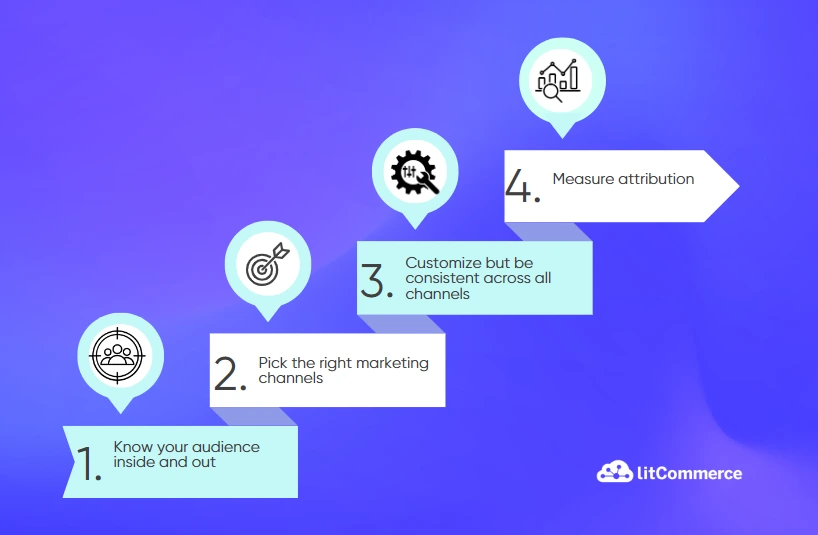
Step 1 – Know your audience inside and out
Before launching any multichannel marketing campaign, understanding your audience is critical. But how do you get beyond surface-level insights? The answer lies in data.
We recommend you use tools like Google Analytics, Facebook Insights, and CRM systems to gather detailed information about your audience. These tools provide data on demographics, behavior patterns, and engagement levels, allowing you to create detailed customer personas. For instance, you can use Google Analytics to identify the number of visitors, their geographical origin, age, gender, the device used, etc.
Once you have the data ready, it is time to segment your audience. It is recommended that specific advertising campaigns for each segment be developed based on their characteristics and demands. For example, if the analysis reveals that many of your audience use mobile devices to interact with your brand, it is crucial to make the content mobile-friendly.
Step 2 – Pick the right marketing channels
Choosing the right marketing channels isn’t just about guessing where your audience might be; it’s about knowing where they are most active and engaged.
It suggests that clients should remain active in the channels that their target audience is likely to be most engaged and that they can be the most useful. For instance, a B2B firm may find LinkedIn and e-mail marketing more suitable for its business. In contrast, a B2C firm may record higher success rates from Instagram and partnerships with social media influencers.
While the best channels will differ according to your business’s individual needs, we propose these top channels known for their effectiveness in multichannel marketing:
- Social media: With 91% of retail brands utilizing multiple social media channels, it’s clear that this platform is crucial for customer engagement. Social media users, particularly millennials and Gen-Zers, have an average of 8.5 accounts, making it a prime space for brands to connect with their audience.
- Email marketing: Email marketing: Email marketing has been named one of the most favorable marketing communications channels, with more than 50% of B2B multichannel marketers noting extraordinary ROI. It is a helpful part of any strategy as this channel fosters a direct and personalized interaction with the patrons.
- Website and landing pages: Websites and landing pages are vital for conversions, as 34% of consumers visit a retailer’s site before buying. Moreover, 64% of B2B tech buyers review several pieces of website content before making a decision.
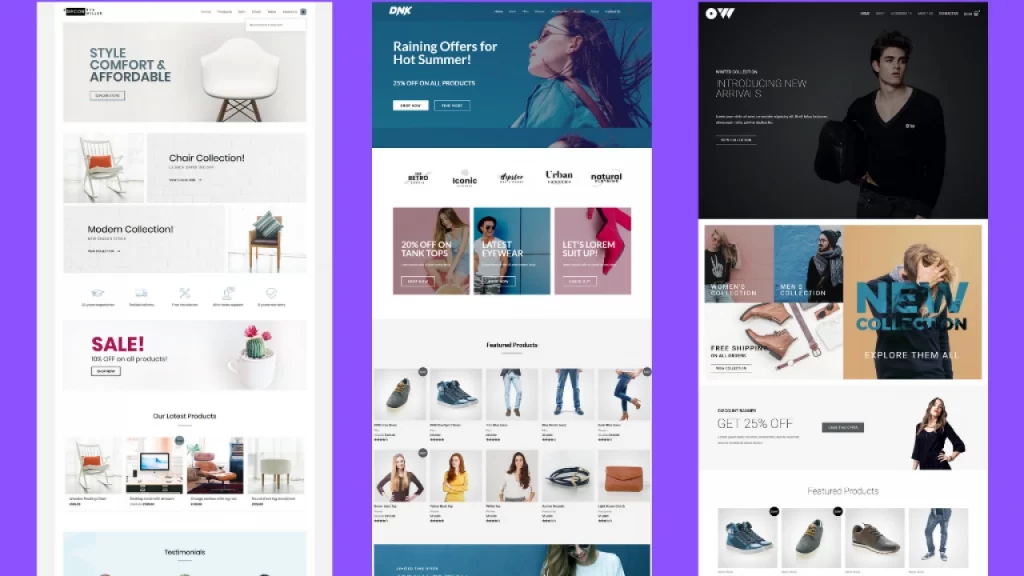
.
Pro tips: It’s a good idea to check which channels your target audience uses most. Start with a few channels and gradually add more as you learn how well your product works.
Step 3 – Customize but be consistent across all channels
Each channel has its own vibe, so you’ll need to tailor your content to fit. But remember, your brand’s voice and message should always stay consistent, no matter where people encounter you.
In such as, you need a brand style guide to keep your brand consistent. Whenever you create content for a new channel, use this guide to make sure your brand’s identity stays the same, even if you adjust your message for that specific platform.
You should also use A/B testing to experiment with different content variations to see which resonates best with your audience on specific channels. This data-driven approach helps you customize content effectively without losing consistency. For example, a clothing retailer might test different ad copy for a Facebook ad targeting younger audiences versus an email campaign targeting older demographics. While the copy may differ to suit each group, the underlying brand message—such as promoting sustainable fashion—remains consistent.
Step 4 – Measure attribution
You can’t improve what you don’t measure. But how to measure?
First, choose an attribution model that matches your marketing goals and strategy. Here are some popular models:
- First-touch attribution: Credits the first touchpoint a customer interacts with.
- Last-touch attribution: Credits the last touchpoint before conversion.
- Linear attribution: Distributes credit equally across all touchpoints.
- Time decay attribution: Gives more credit to touchpoints closer to the conversion.
- Position-based attribution: Allocates significant credit to the first and last touchpoints, with the rest divided among middle interactions.
- Data-driven attribution: Uses data and machine learning to assign credit based on the actual impact of each touchpoint.
Now, to measure attribution accurately, you need robust tracking mechanisms, such as:
- UTM parameters: Use UTM parameters to track the performance of different marketing channels and campaigns.
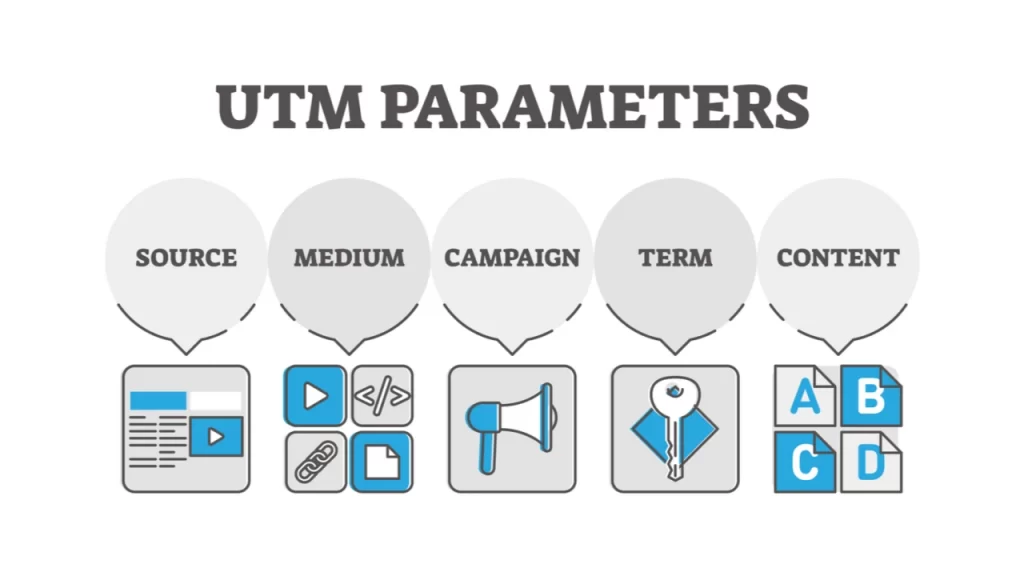
- Cookies and tracking pixels: Employ cookies and tracking pixels to monitor user interactions and behaviors across various touchpoints.
- CRM systems: Connect Customer Relationship Management (CRM) systems to gather comprehensive data on customer interactions and conversions.
Finally, set up recurring reports to monitor attribution data and identify trends. You should track metrics like cost per acquisition (CPA), customer lifetime value (CLTV), and return on ad spend (ROAS) to assess the effectiveness of your channels.
Multichannel Marketing vs Omnichannel Marketing
Multichannel and omnichannel marketing, while seemingly similar, differ fundamentally in their approach to customer engagement.
Multichannel marketing means reaching out to customers through different channels like emails, social media, and physical stores. The goal is to increase brand awareness and give customers different ways to connect with the company. However, these channels usually work separately, which can result in a disjointed experience for the customer.
Omnichannel marketing goes beyond just using different channels; it connects all of them to give customers a smooth and consistent experience, no matter how they interact with the brand. This approach focuses on the customer and emphasizes personalization and continuity. By sharing customer data across channels, businesses can customize their messages and offers based on what each person likes and does. This helps create a unified brand story and improves customer satisfaction.
Here’s a brief comparison table to highlight the key differences bet:
Feature | Omnichannel marketing | Multichannel marketing |
Focus | • Customer experience | • Brand reach |
Channel integration | • Seamless | • Limited |
Customer experience | • Unified | • Fragmented |
Customer data | • Shared across channels | • Siloed |
Personalization | • Advanced | • Basic |
Multichannel Marketing – FAQs
Multichannel marketing is a strategy that connects with customers using different communication methods, such as email, social media, and physical stores, to ensure a consistent brand experience. While multichannel marketing focuses on being present on multiple platforms, omnichannel marketing strives to create a unified and personalized experience across all those platforms. The latter requires a greater investment in technology and data management, but the rewards in terms of customer loyalty and engagement can be substantial.
Your Turn to Act Multichannel Marketing!
Now that you’ve gone through the key points to understand a multichannel marketing strategy deeply, it’s time to put what you’ve learned into practice. Remember, multichannel marketing isn’t just about being everywhere; it’s about being everywhere that matters to your audience, with a message that resonates and a brand that they recognize and trust. Start building your strategy today, and watch your brand’s presence grow across every channel.
Finally, keep your eCommerce game strong by visiting the LitCommerce blog. If you need a reliable tool for multi-platform selling, LitCommerce is here to help! Don’t hesitate to reach out – we’re committed to your success!

